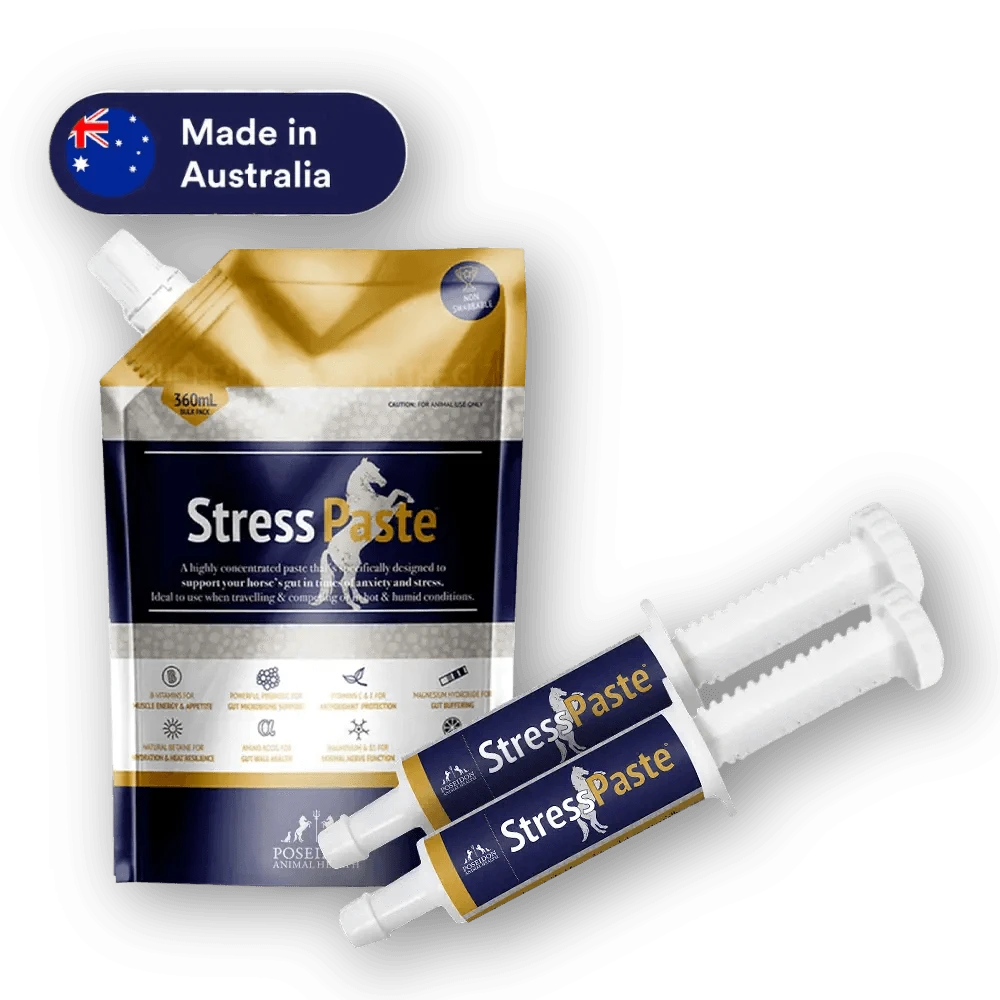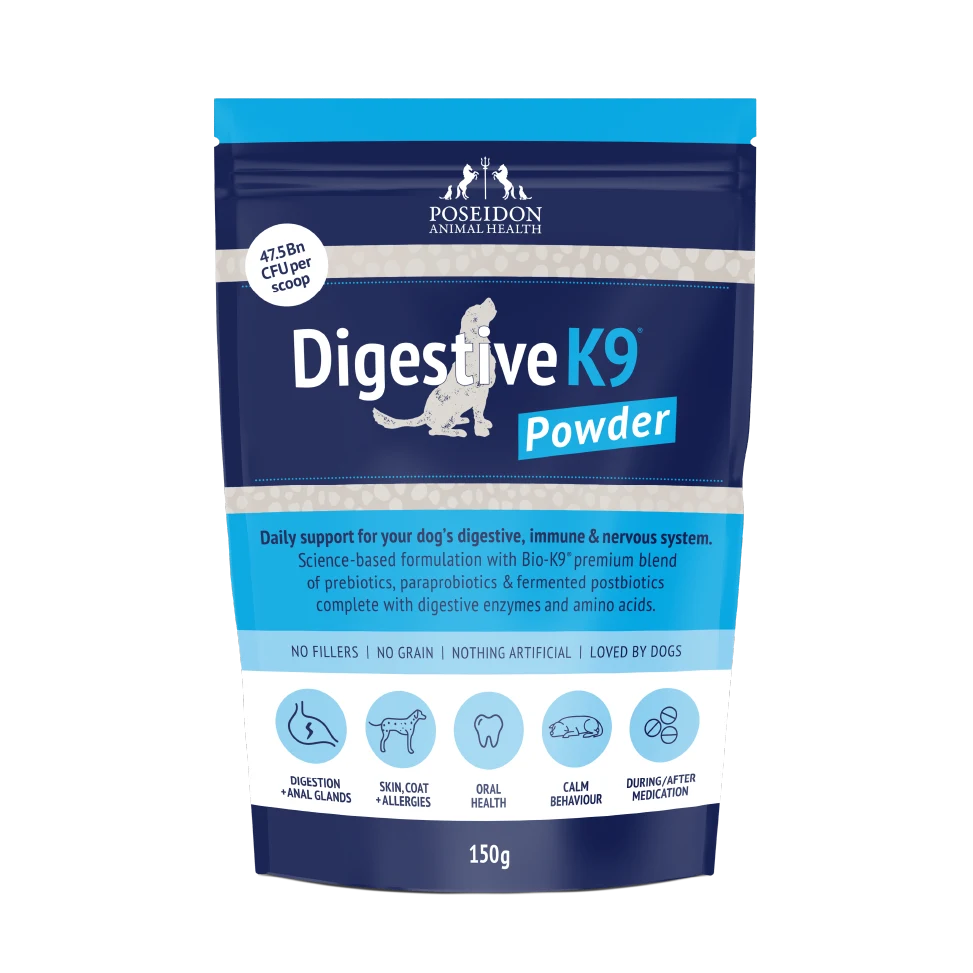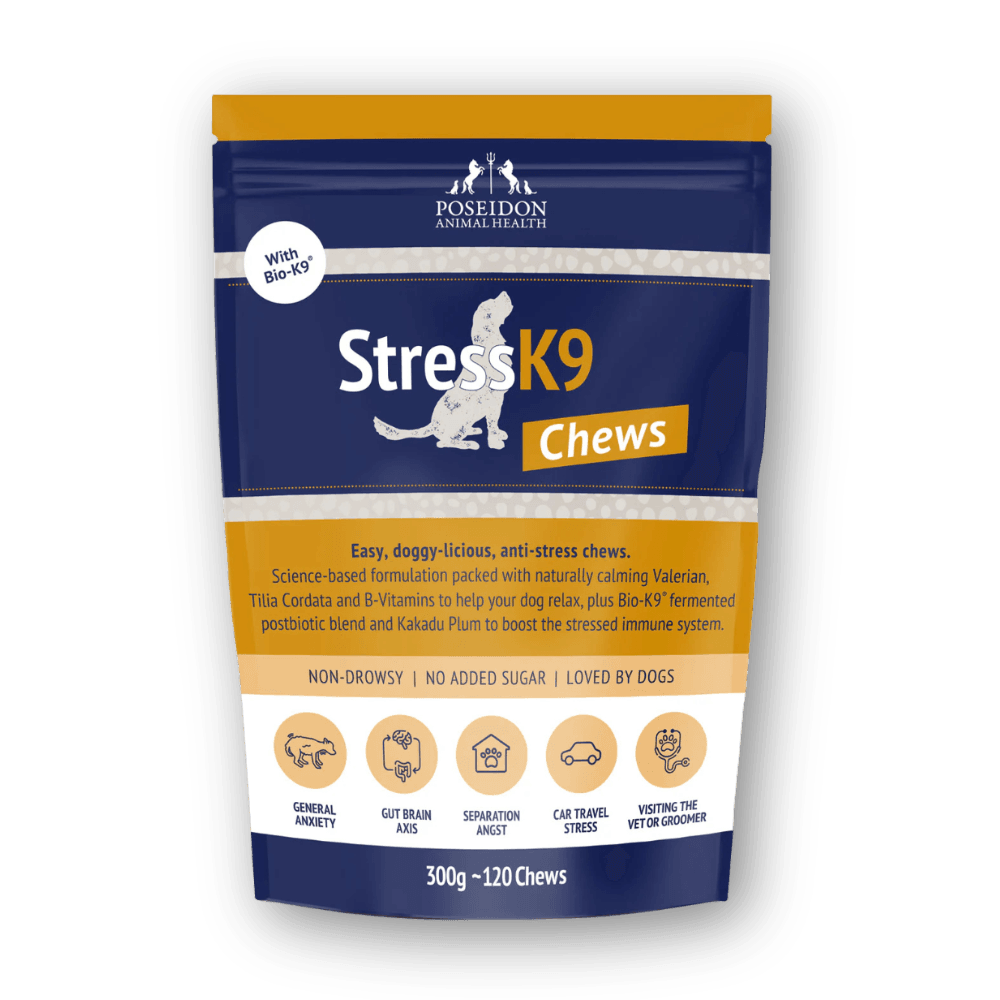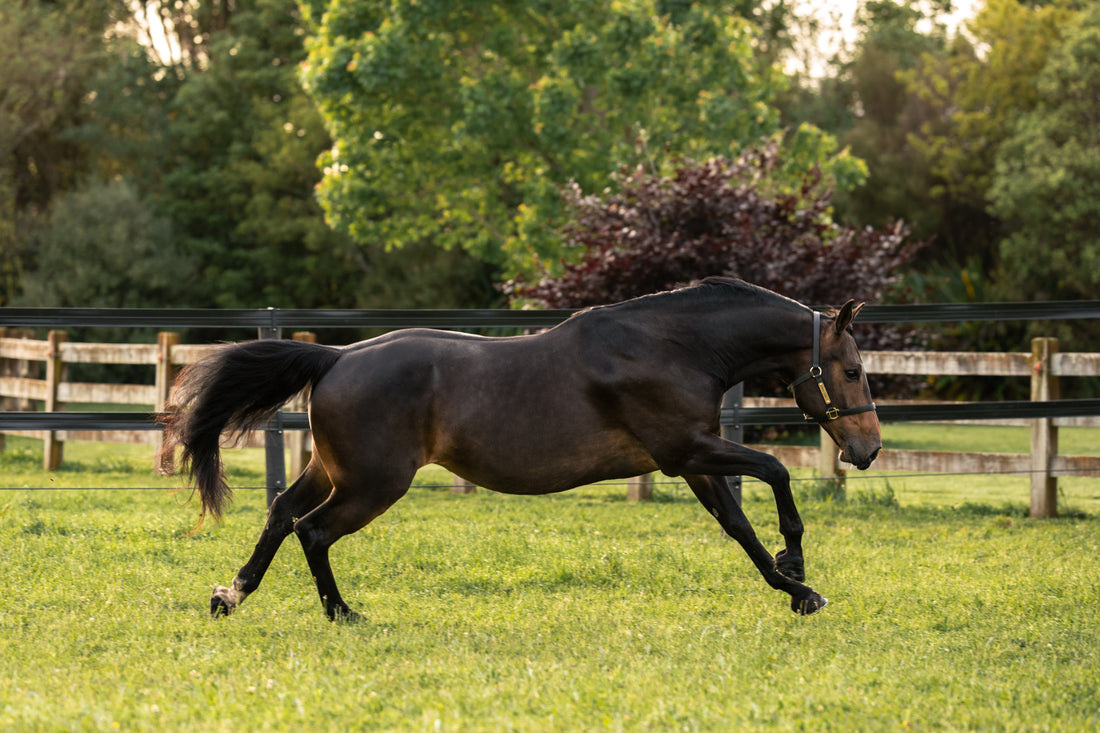
"Yikes, my horse is so fizzy right now, I really need to get a toxin binder!"
"My horse is so grass affected, he's acting crazy, must be the grass toxins!"
"I have a show next weekend; I really need a toxin binder to make sure my horse is calm."
Every spring, autumn, and after a rain flush, the equestrian world echoes with statements like these. Often, the first thing everyone will recommend for a horse with hot, unpredictable, spooky or fizzy behaviour is a toxin binder.
Sometimes they are right - your horse may be reacting to grass toxins. Other times, the culprit might actually be grass fructans, or simply an increased energy intake due to high energy pastures causing your horse to have an over-abundance of energy! We’ll help you identify the signs of these different influences on your horses behaviour, and explain how you can help them.
GRASS TOXINS
Why can grass toxins be a problem for horses?
Perennial Ryegrass is a prevalent pasture grass species in Australia, especially during the cooler months. So it follows that the most well-known grass toxin that affects pasture fed horses is Lolitrem B, one of many toxins produced by the fungus Epichloë festucae var. lolii, which grows on Perennial Ryegrass - and can create the neurological reaction called Staggers.
Lolitrem B normally shows up when perennial ryegrass pastures are either overgrazed, or undergrazed, and can be found both in the seedheads and at the base of endophyte protected rye grass; so horses are vulnerable to the toxins when they are grazed on paddocks of Ryegrass pasture when the grass is very short or long and gone to seed.
Signs your horse is affected by grass toxins
Ryegrass endotoxins can affect any animals which graze affected pastures including cattle, sheep, horses, deer and alpaca. Horses who eat grass with this endophytic fungus growing on it can experience neuromuscular dysfunction, which can get worse if they are stressed or exercised. The animals can look fine while grazing, only to fall over in extreme cases if suddenly spooked. Understandably, this can make your horse unpredictable, unsteady and stressed.
Changes in behaviour are often the first obvious sign of toxicity, with horses appearing anxious and hyperactive. Symptoms may then progress to:
- fine tremors
- ataxia (poor muscle control that causes clumsy voluntary movements, and may cause difficulty with walking and balance, coordination, swallowing, and eye movements)
- tetany (involuntary muscle contractions and overly stimulated peripheral nerves).
This research studied horses exposed to Lolitrem B. All the horses developed a variable degree of tremor and ataxia (lack of muscle control). The tremor depended on the level of activity and included a subtle, rapid tremor of the eyeball. Limb swelling, heel lesions and serous nasal discharge were also observed in horses most severely intoxicated.
Another common mycotoxin in pastures is Ergovaline - a toxic ergot alkaloid found in endophyte-infected grasses, normally perennial ryegrass and fescue. Ergot-alkaloid toxicity is less commonly found in horses than Lolitrem B, but it can constrict blood flow and affect the animal's ability to regulate body temperature. Other symptoms can include fever, rapid breathing, rough coat, excessive salivation, lameness, poor reproductive success, and increased water intake.
The fungus that grows on paspalum seed heads can cause nervous behaviour within just two days, which can escalate to jerky movement, animals falling if they try to run, and sometimes behaviour changes where the animal becomes belligerent and dangerous to handle. Long term, paspalum grass fungus can even lead to paralysis, but animals recover quickly if they are moved away from the paspalum pasture.
How to help a horse affected by grass toxins
A toxin affected horse should be removed from the pasture, rested, and fed a toxin binder, like the one we use in both Digestive EQ and Digestive RP.
They will normally recover within 2-5 days. If you are unsure, a pasture test can normally detect Lolitrem B, but this can be expensive and takes a little time, so if you are at all worried do consult your vet right away - it might be possible to test blood or urine to assess if your horse is mycotoxin affected, and the clinical symptoms may mean that it is clear what is wrong without testing being required.
Not all toxin binders are created equal
Many mainstream toxin binders rely on yeast as the main ingredient. The limitation of this is that a yeast derived glucomannan based binder binds polar-mycotoxins, and - you guessed it - pasture based mycotoxins Ergovaline and Lolitrem B are non-polar toxins.
"A yeast based binder is unlikely to be reducing the effects of ergovaline and Lolitrem B but you may see a positive effect if your other feed, hay or chaff is contaminated with one of the common mycotoxins (like Aflatoxin) which yeast based toxin binders are good at binding." - Dr Nerida McGilchrist, PhD
There are now dual action toxin binders available, like the one we use in both Digestive EQ and Digestive RP, that have activity against both polar and non-polar mycotoxins.
What else can help horses affected by grass toxins?
Magnesium and B Vitamins are well known for providing support to the nervous system and muscle relaxation. Neurotropic B vitamins (B1, B6, and B12) play crucial roles in the maintenance of a healthy nervous system.
Calcium can be useful to help meet nutritional requirements, as lush pastures are often low in calcium.
The antioxidant Vitamin C provides liver and nerve support, and aids cellular rejuvenation. Interestingly, mycotoxins like aflatoxin can impact liver function, which may include the liver’s ability to product Vitamin C.
If you think your horse has been affected by grass toxins, it's a great time to ensure they are getting great gut support by giving them Digestive EQ, ideally in two feeds daily. You may want to ask our team about giving your horse Stress Paste also, for extra gut protection.
HIGH DIETARY ENERGY
Horses on lush grass can simply have too much energy
A very common cause of changes in behaviour that correlate to changes in pasture, which is less often discussed, is that the horse is just getting too much nutritional energy! This is really common when high energy spring grass comes in, but owners continue to supplement with the same high energy feed the horses needed over winter.
Too much high energy food has a definite impact on horses’ behaviour, and lush pastures are so high in energy that they often create high energy behaviour. If you imagine that you are feeding 2kg of supplementary feed plus hay for a horse in light work and the horse begins to become reactive or too high energy, you would look to reduce the amount of energy being given in the feed. But with pasture, the changes in nutritional energy aren’t as obvious as how many scoops you feed each day. Energy levels in pasture can vary without it being visibly obvious, from week to week, or from one field to another, or with the level of work your horse is doing.
In most cases simply restricting access to high energy pasture through strip grazing, or limited pasture time and supplementing with lower energy hay, will result in calmer behaviour... and you can be sure that you are also limiting the potential for fructan (see below) and mycotoxin consumption too, so you will be covering all three bases by taking this simple step toward a calmer horse.
FRUCTANS
It could be the grass fructans affecting your horse
If your horse is hot and bothered, spooky, reactive, bucking or more fizzy than usual – but isn't showing the signs of grass toxicity, or isn't on Ryegrass or fescue pasture or isn’t being provided with too much energy - it is possible that the problem is the fructans in the grass. This is especially likely after a fresh growth of grass, or during a period of frosty nights and fine days as both of these affect the non-structural carbohydrate levels in grass.
How grass fructan can affect the hindgut in horses
Grasses store fructan as an energy reserve, which can't be effectively digested by horses in the small intestine, because they just don't have the right enzymes. So, the fructan goes straight through to the horse's hind gut where it is rapidly fermented by the gut bacteria. This process produces excess volatile fatty acids and lactic acid which can make the horse's gut become increasingly acidic. The acidity and the shift in bacterial food source from predominantly structural carbohydrate (fibre) to large amounts of non-structural carbohydrate causes a shift in the hindgut bacteria from being dominated by the ‘good’ fibre fermenting bacteria to the ‘bad’ amylolytic bacteria who love to ferment bacterial food sources like fructan and starch. The state of the horse's hindgut microbiome can change dramatically. And this can affect a horse’s behaviour, immune function, ability to digest fibre, as well as reduce beneficial hormone and vitamin production.
How does grass high in fructan change your horse's behaviour?
This shift in hindgut bacteria can change behaviour and mood in horses, especially when they are under physical or mental stress. As well as their other roles, hindgut microbiota produce short-chain fatty acids, hormones and neurotransmitters, all of which can contribute to the horse's mental state, or 'mood'.
So the gut bacteria changes can influence your horse's mood - which is likely to make them feel under the weather, reactive - and a bit grumpy or sorry for themselves!
How to help a horse with pasture high in grass non-structural carbohydrates
If your horse is acting unpredictably or dangerously, a great first step is to restrict pasture and provide ample, good quality, low sugar and fructan forage like hay.
You can also feed them Digestive EQ (ideally in two feeds each day to spread the effect) to help support the good bacteria in their gut, and to work on moderating the gut acidity and pH shifts while the fructan levels in your horse’s pasture are high.
And, sometimes it wasn’t the grass causing the behaviour
If you can eliminate grass toxins, grass non-structural carbohydrates and excess energy as causes for your horse showing 'over-the-top' or unusual behaviour, it's time to look carefully at things like physical pain (ulcers, gut acidity, muscle aches, hoof pain, etc), saddle fit, fitness levels for the work being asked of the horse, rider fitness, and more.
Don't hesitate to ask for expert help in any areas you think are possible causes of your horse's behaviour.
If you still have questions, reach out to us via chat now!







